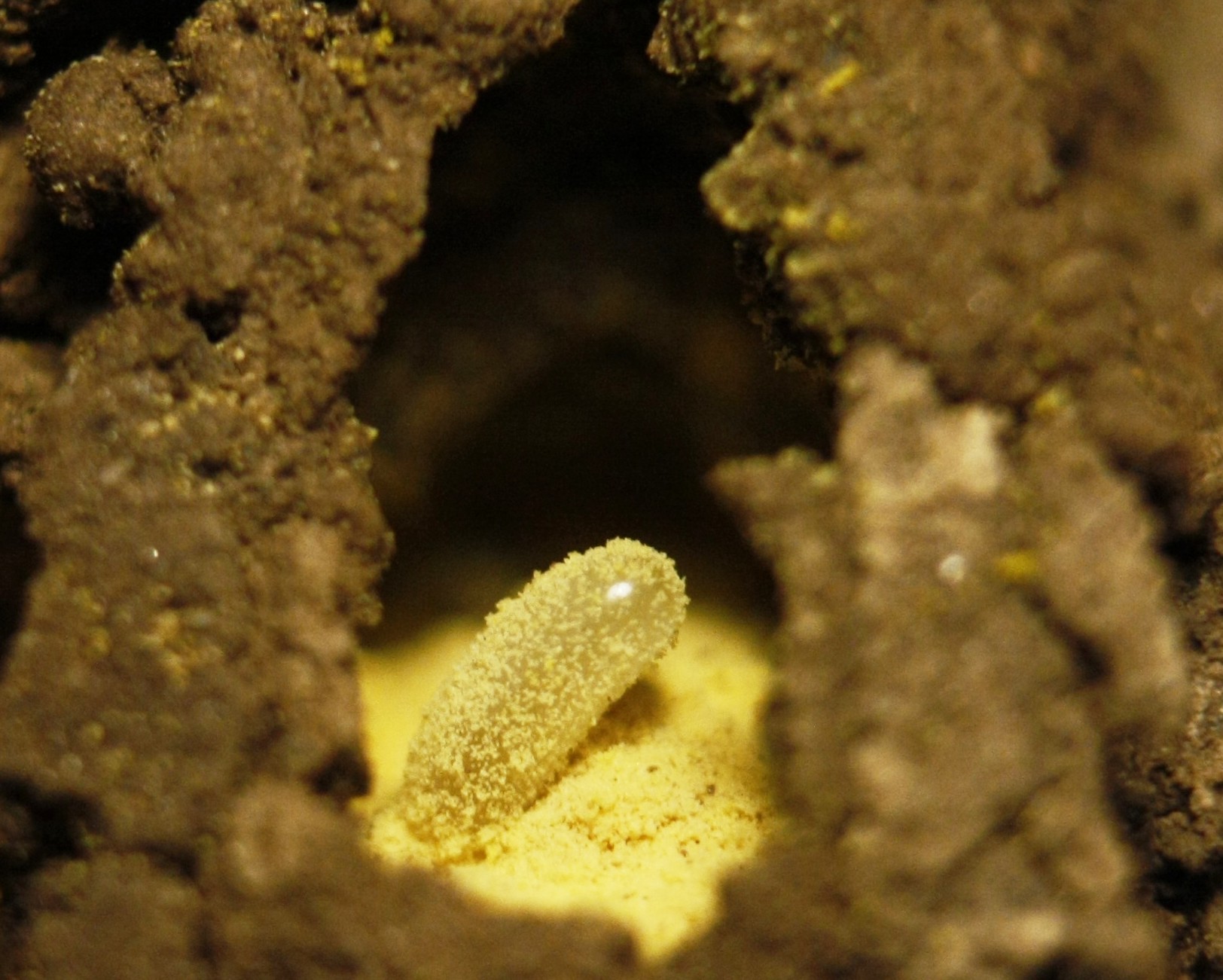
Contact
Tierphysiologie
phone: 26442
fax: 27152
karsten.seidelmann@zoologie...
room 8.05
Hoher Weg 8
06120 Halle (Saale)
postal address:
Tierphysiologie
06099 Halle (Saale)
Behavioural Ecology of Solitary Bees
Impact of nest-hole dimensions on maternal investment in the Red Mason bee, Osmia bicornis (syn: O. rufa)
Females of solitary nest-constructing bees invest much in brood care. They construct nests to shelter their brood and they provision the individual cells with pollen and nectar as the only food source for the developing offspring. Due to the haplo-diploid system of sex-determination female bees have the opportunity to adjust the sex of each offspring by fertilizing the egg or not. Together with the determination of the body offspring's body size by the amount of food stored in his cell, mother bees can freely adjust their investment and the expected fitness of each offspring. The aim of the project is to identify strategies in mother bee's investment and factors influencing them.
Stabilization of optimal body size by flight capability and mating success in the Red Mason bee, Osmia bicornis (syn: O. rufa)
Females of solitary bees are able to determine both the body size (via the provision provided) as well as the sex (haplo-diploidy) of each of their progeny. The frame for optimization of maternal investment is set by the Fisher-axiom of even investment in both sexes. The resulting sex ratio of the bee population is fixed by the body size of progeny due to this boundary condition. Body size of progeny becomes the main fitness criterion. In daughters body size determines provision capability, in sons body size influences the expected mating success.
Optimal body size depends on different factors in both sexes. Scopa capacity to stuff pollen in and flight capability to transport provisions are key traits for provision efficiency of O. bicornis females. In males, fitness depends solely on mating success. In this context, the impact of body size is determined by the mating system. The study focuses on how morphological parameters cause an optimal body size. Furthermore, the opportunity to control bee body size would be advantageous for commercial use of solitary bees for pollination in agriculture.




